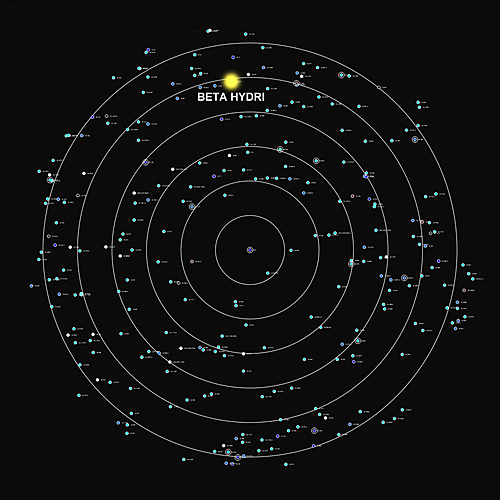
DISTANCE: 24.3 light years from Sol
NEIGHBORING SYSTEMS: Delta Pavonis 9.3 lys 82 Eridani 15.2 lys Alpha Centauri 21.2 lys
BETA HYDRI is a yellow-orange dwarf which is currently classified as a subgiant. This star is evolving off the main sequence as it begins to fuse increasing amounts of helium ash mixed with hydrogen at its core. As it has gradually continued to exhaust its remaining supply of hydrogen, it has brightened and expanded in size to the star we see today. This system is made up of three gas giants which have a combined total of 83 moons in orbit around them. Beyond this is a dense field of asteroids, water-ice, and dust debris.
JABBOK is the second planet in orbit and is composed primarily of hydrogen, helium, and ammonia. This gas giant is nearly as large as Jupiter and is surrounded by a lethal halo of charged particles. The innermost moons receive extreme levels of radiation, which is aggravated due to the higher level of heavy elements in the planet’s internal composition. Jabbok has an intense internal heat source of its own that results from energy released during the contracting of gases. This “latent heat”, combined with the heat of its host star, is believed to have been a contributing factor in the development of life on one of its 26 moons.
Br’uuth is Jabbok’s largest moon and the only one capable of supporting life. Millions of years ago, this world was covered in a thin layer of ice with many primitive forms of life thriving just below the surface. As its host star slowly expanded, the ice began to melt into oceans and seas. Eventually, the landscape became covered in humid jungles and murky swamps, but the moon’s climate has grown steadily warmer over time. This has caused the jungles and swamps to begin to recede and be replaced with strips of mineral-rich deserts. Slightly more massive than Earth, Br’uuth has a surface gravity of 1.5 standard Gs. During its orbital period of 28 days, it is tidally locked; with one side facing the massive gas giant and the other side always facing away. Located at the edge of Jabbok’s main radiation belts, the moon becomes shrouded in a shimmering aurora as it orbits around the dark side of the planet and receives a scourge of radiation.
For the most part, life on this large moon has slowly adapted to contend with both the strong ionizing radiation and the increasingly warmer environment. While several varieties of flora and fauna have evolved to survive in the deserts, most lifeforms here have continued to retreat to the slowly diminishing wetlands. Br’uuth is also the homeworld of both the Gethum and Grozel races.
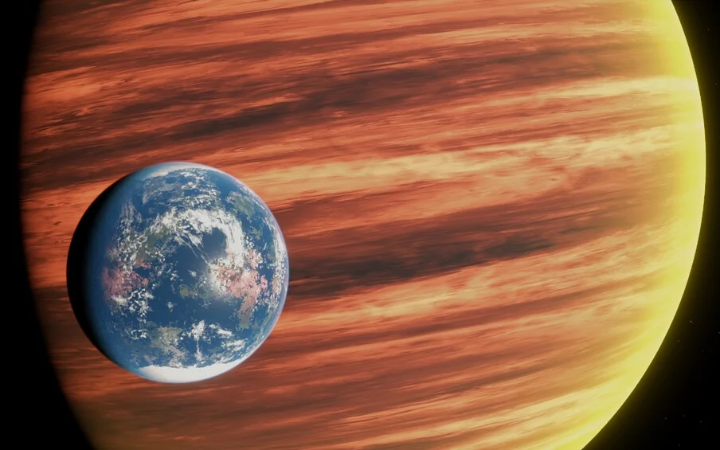
The GETHUM are the dominant intelligent lifeforms on Br’uuth and originated from large toad-like amphibians indigenous to the far side of the moon. They eventually evolved to stand erect on two stocky muscular legs and typically reach a height of around 1.7 meters tall. Their bodies are somewhat “pear-shaped” with short sinewy arms ending in dexterous webbed fingers. Their heads consist of two round glistening eyes, broad noses, and wide mouths which contain a single row of small teeth lining the lower jaw. Their long tongues can extend out to nearly 2 meters in length to catch flying insects, scurrying rodents, and even smaller amphibians for food. They also have an expandable throat pouch that can swell up like a balloon which is most often used to either attract a potential mate or as a means of intimidating others when feeling threatened. Their skin ranges in color from light gray to dark green and is covered with large bumps and warts which secrete an oily substance that keeps their bodies moist. This secretion also serves as a defense mechanism as it is mildly toxic and can cause temporary nausea to those outside of their species.
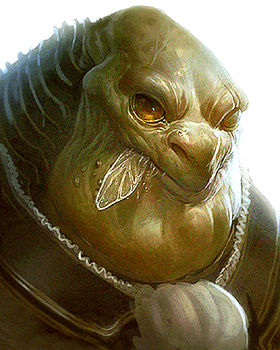
The Gethum lifecycle has been continuously shaped by the unique dual seasons of their moon’s month-long orbit around Jabbok. They are a cold-blooded species which causes their body temperatures to change in order to match the temperature of their environment. During the 14 days that Br’uuth orbits around the light side of the planet, there is no night. Rising temperatures cause them to become increasingly more active; eventually resulting in highly aggressive and often violent behavior. These hostile tendencies reach a peak when the moon is lined up directly with its sun. At this time, their entire society participates in a long series of brutal games where individuals fight to the death as a show of both power and dominance. However, as Br’uuth begins to enter Jabbok’s shadow, their activity decreases and they slowly come together in the warm muddy swamps of their home in order to mate. The Gethum are a sequentially hermaphroditic species; meaning that they can change their gender from male to female and back again many times throughout their lives. After laying and fertilizing billions of jelly-like eggs, the adults submerge themselves in the slimy bogs and enter into a state of hibernation until their moon emerges back into the sunlight once again.
Only a small percentage of their eggs survive long enough to develop into younglings; sometimes referred to as “woglets”. Not only are they threatened by a variety of indigenous creatures which view them as food, but the under-developed and weak often become a source of nourishment for their stronger and more hardy siblings as well. Those who do manage to survive grow very rapidly and, within two cycles, are able to leave the mud and walk on dry land. Young Gethum are typically left to fend for themselves until they are strong enough to join the community. This “survival of the fittest” mentality permeates their entire culture and is highly evident in their characteristic behavior of subduing others for their own gain. Unfortunately, this natural tendency became even more apparent when they first encountered their neighboring species, the Grozels.
—————————————-
The GROZELS evolved from a species of large hairless rodents and are indigenous to the side of Br’uuth that perpetually faces the gas giant. Standing erect at just under a meter in height, their bodies are small and compact with stocky arms and legs. They have big round eyes which are best suited for seeing at night, huge protruding ears that give them excellent hearing, and small mouths full of squared-off teeth used for grinding up plant material, insects, and grubs. Although their level of intelligence is considered to be quite limited, they clearly exhibit self-awareness and the ability to use tools and communicate with each other. They have even developed highly complex social structures within their individual communities.
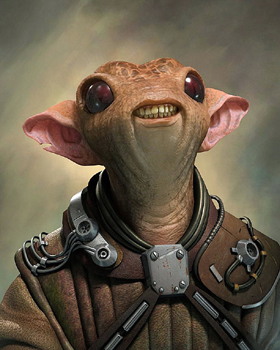
Grozels make their homes within the underground root system of large trees where each group often consists of up to a dozen families. They are extremely social creatures who develop close communal attachments and typically mate for life. Bonding parents normally give birth to three or four “pups” at a time which are then raised by the entire community as a whole. Being mostly nocturnal, they generally only emerge from their dens during the 14 days that their moon is on the dark side of Jabbok. They spend much of this time diligently gathering up food and supplies in preparation for the coming light. As Br’uuth orbits around the other side of the planet, the entire hemisphere is immersed in the reflective brightness of the gas giant. This light is nearly blinding to their sensitive eyes and they quickly retreat into the relative darkness of their homes where they spend the next 14 days in inconsistent slumber.
The Grozel population is spread out all across the landscape in small communities where they lived in complete peace and harmony for thousands of years. They remained blissfully unaware of the hostility and bloodshed taking place on the opposite side of their moon, until the Gethum arrived and ravaged their homes.
Until around 500 years ago, the Gethum had never explored the other side of their world. They were completely unaware that they even orbited a gas giant; much less that there was another intelligent race sharing their large moon. Although only a small portion of their offspring survive to adulthood, the sheer number of eggs that are laid each cycle has continued to increase their population exponentially. Overcrowding and the gradual depletion of their resources eventually forced them to expand their civilization to the opposite hemisphere as well. Along with the remarkable discovery of their host planet, Jabbok, their first encounter with the Grozels completely changed the lives of both species. The Gethum immediately viewed these less-advanced creatures as a perfect species to subjugate. Those who were captured were enslaved and integrated into Gethum society as a new worker caste; forcing them into servitude and hard labor. Those who resisted often realized too late that their oppressors were not opposed to burning down entire forests in order to decimate any further uprisings.
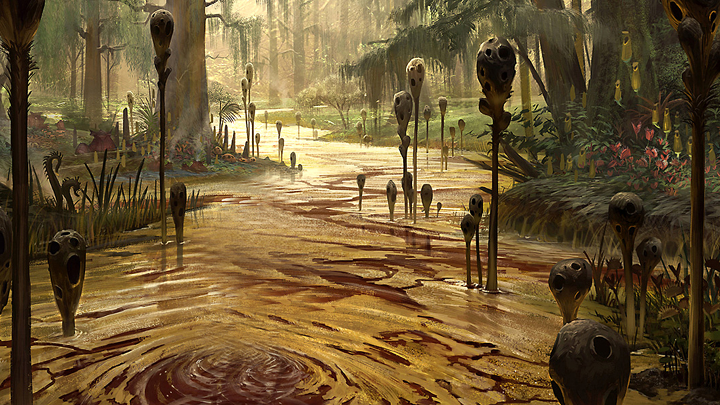
Marshlands and swamps remain the primary natural habitat of the Gethum, yet as these ecological regions have gradually diminished and their population has grown, they have become even more desperate for their very survival. Over time, they established a wide-range of irrigation methods to turn previously arid environments into additional wetlands. However, the overall decrease in sources of fresh water was what eventually caused them to develop their earliest spacecraft. This allowed them to reach, not only the other moons orbiting Jabbok, but the asteroid field at the edge of their star system as well where they began mining water-ice to replenish their world with this crucial resource. On these long sub-light missions, the Gethum quickly found that their bodies continued to function on their 14 day sleep rotation. Because of this, every vessel they’ve constructed includes at least one large tank of briny mud which serves as the crew’s hibernation chamber.
Currently, Gethum technology is at least 50 years behind that of Humans and, although they have developed FTL propulsion engines, their ships are still comparatively slow. Its uncertain how far their territory extends, but recent evidence suggests that they have a distant outpost located in the Zeta Reticuli system. Their relationship with other intelligent races has been mostly antagonistic and they have a reputation for being arrogant, ill-tempered, and manipulative. Their first encounter with the Brekka occurred around the end of the 22nd century when Gethum pirates attempted to pillage one of their outposts. The Brekka responded immediately by disabling their FTL drive and sending them limping home. However, it wasn’t long before they began to focus their efforts on slightly easier targets and were soon making random raids on the Human colonies of 82 Eridani, Epsilon Indi, and later Delta Pavonis as well. Dropping into a system unannounced, stealing whatever shipments and supplies that they can, and leaving the area just as quickly is characteristic of those that Humans refer to as “croakers”. The Gethum have also established an extensive network of gravitic mines along the outer boundaries of their own star system to disable any vessels that happen to stray into their territory.
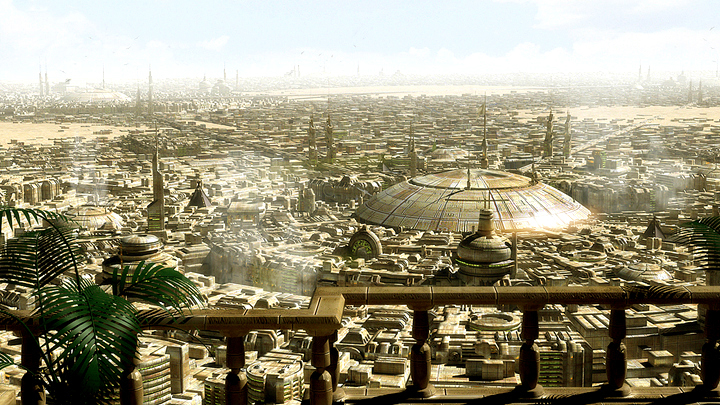
The Gethum have no official presiding government. Instead, their entire society is run by regional crime lords and localized gangs; each one relentlessly competing with the others for control. It is a common practice for those at the bottom to work their way up by assassinating their superiors. Those who fail often find themselves fighting for their lives in the public arenas before a crowd of jeering spectators. The most dominant among them have typically reached their level of power through slave trafficking, piracy, and the distribution of drugs. Even the more reputable ones, who have recently begun participating in legitimate trade deals with some Humans, typically have less than honorable intentions and will take advantage of any situation if it suits their needs. As a space-faring species, the Gethum are far too fragmented and disorganized to be considered a serious threat and are often regarded by Humans to be more of an occasional irritation than anything else. Even so, no one has suffered more due to their actions than the Grozels who continue to serve as their slaves to this day.